[Newsbits] 9.01.2024: Peregrine Mission-1, Green Fuels Alliance India & more

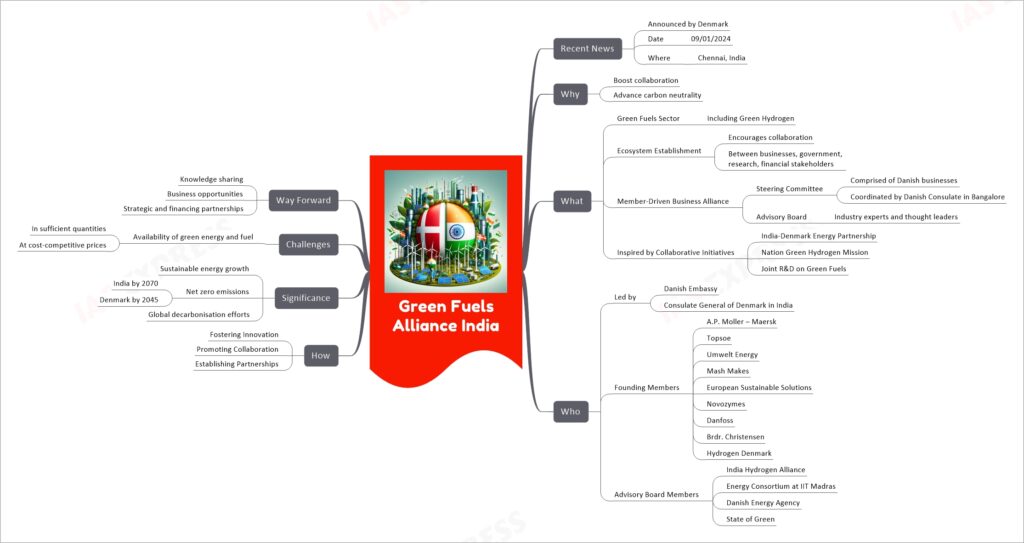
The Green Fuels Alliance India (GFAI) is an initiative launched by Denmark in Chennai, India, on January 9, 2024. This strategic alliance, led by the Danish Embassy and the Consulate General of Denmark in India, aims to boost collaborative efforts in the sustainable energy solutions sector and advance the joint global goal towards carbon neutrality. GFAI focuses on promoting sustainable energy growth in India by creating an ecosystem for collaboration among businesses, government entities, research institutions, and financial stakeholders from both Indian and Danish sectors. Key elements of the alliance include a Steering Committee of Danish businesses, an Advisory Board of industry experts, and inspiration from collaborative initiatives like the India-Denmark Energy Partnership. The alliance is significant in its potential contribution to global decarbonization efforts, with the challenge being the availability of green energy and fuel in sufficient quantities at competitive prices.
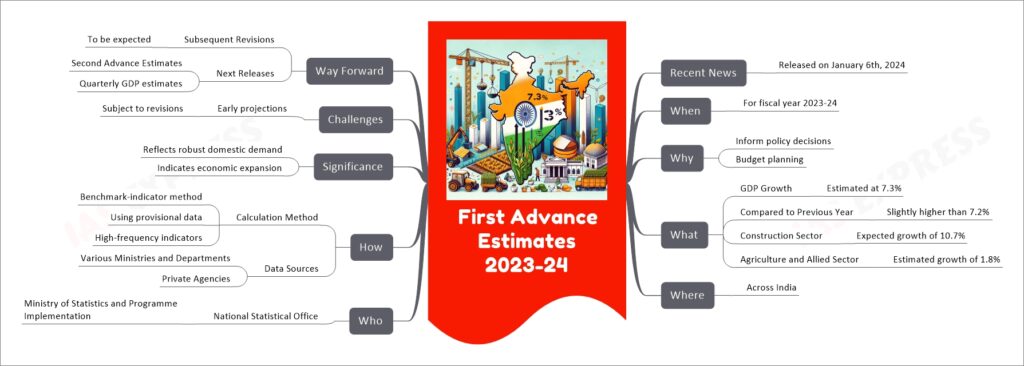
In summary, the FAE for 2023-24 projects India’s GDP growth at 7.3%, slightly higher than the previous year’s 7.2%. This growth is underpinned by a strong performance in the construction sector, while the agriculture and allied sector shows comparatively modest growth. The NSO, under the Ministry of Statistics and Programme Implementation, releases these estimates, which are compiled using a benchmark-indicator method and data from various sources. While these figures are essential for policy and budgetary planning, it’s important to note that they are preliminary and subject to future revisions.
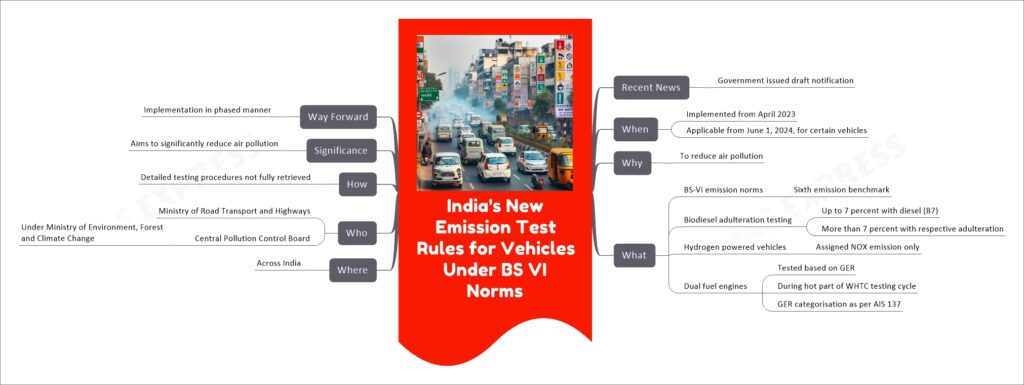
India’s new emission test rules under BS VI norms, issued by the Ministry of Road Transport and Highways and set by the Central Pollution Control Board, aim to significantly reduce air pollution across the country. These rules include stringent testing for vehicles with biodiesel adulteration and hydrogen-powered vehicles. The implementation of these norms, which is a major step in the sixth emission benchmark, is set to begin in April 2023 and will be fully applicable from June 1, 2024, for certain vehicles.
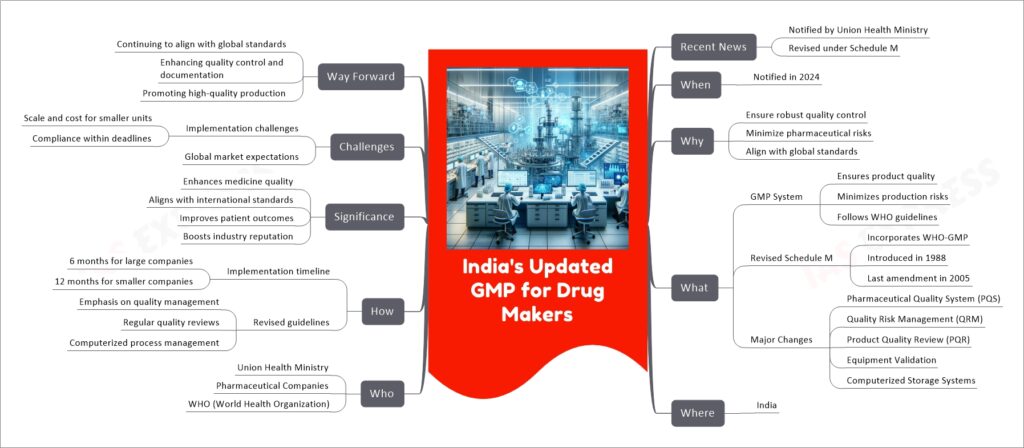
India’s Updated Good Manufacturing Practices (GMP) for Drug Makers, notified in 2024 by the Union Health Ministry, mark a significant revision of the existing standards under Schedule M of the Drugs and Cosmetics Rules. The update aims to ensure robust quality control in pharmaceutical production, aligning India’s standards with global norms, especially those of the World Health Organization (WHO). Major changes include the introduction of a Pharmaceutical Quality System (PQS), Quality Risk Management (QRM), Product Quality Review (PQR), validation of equipment, and computerized storage systems. The revisions require large companies to implement these changes within six months and smaller companies within a year. This move is expected to elevate the quality of medicines, improve patient outcomes, and enhance the reputation of the Indian pharmaceutical industry on a global scale.
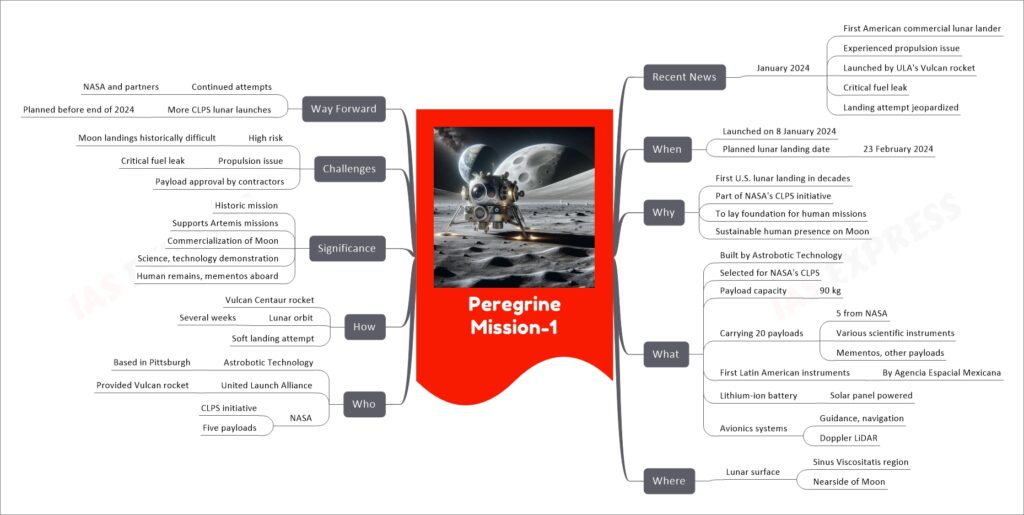
Peregrine Mission-1, launched on January 8, 2024, marks a significant milestone as the first American commercial lunar lander. This mission, part of NASA’s Commercial Lunar Payload Services (CLPS) initiative, aims to lay the foundation for future human missions and establish a sustainable human presence on the Moon. The lander, built by Pittsburgh-based Astrobotic Technology and launched aboard United Launch Alliance’s Vulcan rocket, experienced a propulsion issue and a critical fuel leak, jeopardizing its planned landing on February 23. The mission carries a variety of payloads, including five from NASA, scientific instruments, and other items representing human achievements. Despite challenges like the high risk of lunar landings and technical issues, the mission signifies the beginning of lunar commercialization and supports the upcoming Artemis missions.
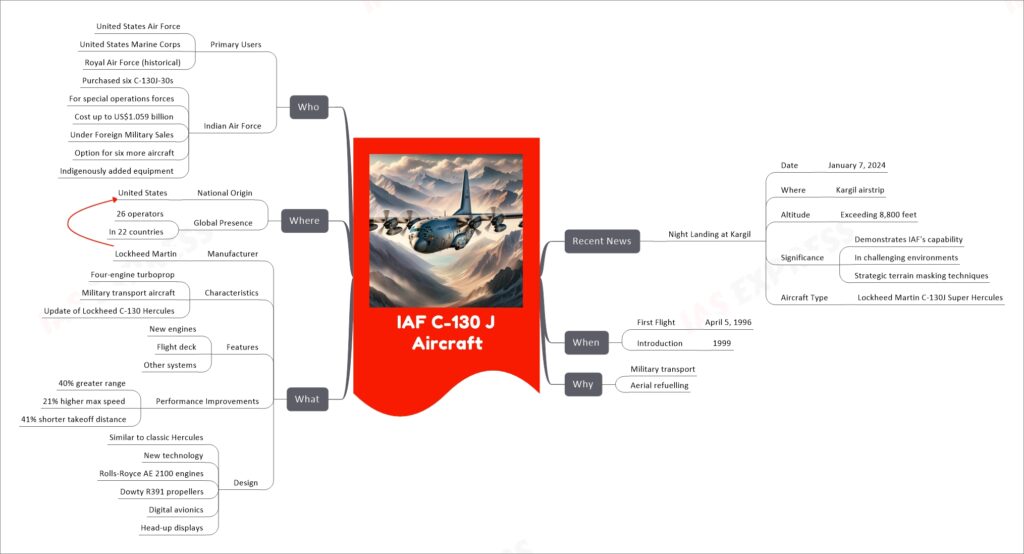
The IAF C-130 J Aircraft, a variant of the Lockheed Martin C-130J Super Hercules, is a notable four-engine turboprop military transport aircraft. It has been recently highlighted for its historic night landing at the Kargil airstrip on January 7, 2024. This event was significant as it demonstrated the Indian Air Force’s operational capabilities in challenging environments, particularly at an altitude exceeding 8,800 feet. The aircraft, introduced in 1999 and developed from the Lockheed C-130 Hercules, is known for its improved performance, including a 40% greater range, 21% higher maximum speed, and a 41% shorter takeoff distance compared to its predecessors. The C-130J has been adopted by 26 operators in 22 countries globally, with the Indian Air Force purchasing six C-130J-30s for its special operations forces, with an option for six additional aircraft.
If you like this post, please share your feedback in the comments section below so that we will upload more posts like this.
